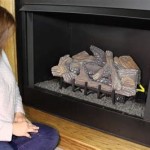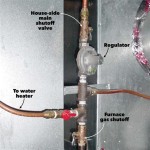Wood Burning Stoves in Fireplaces: A Comprehensive Guide
Installing a wood-burning stove in a fireplace is a popular choice for homeowners seeking to enhance both the aesthetic appeal and heating efficiency of their living spaces. While fireplaces have long been a focal point of homes, their traditional open-hearth designs are notably inefficient, losing much of the heat generated up the chimney. Wood-burning stoves, on the other hand, offer a more efficient way to enjoy the warmth and ambiance of a fire. This guide provides an in-depth examination of wood-burning stoves in fireplaces, exploring their benefits, types, installation considerations, and maintenance requirements.
Benefits of Installing a Wood-Burning Stove in a Fireplace
Choosing to install a wood-burning stove in an existing fireplace comes with numerous advantages, offering a compelling alternative to traditional fireplaces.
- Increased Heating Efficiency: Wood-burning stoves are significantly more efficient than open fireplaces. Their closed combustion systems and heat exchange mechanisms retain a greater percentage of the heat generated, effectively warming the surrounding area.
- Cost-Effective Heating: Depending on the availability of wood, wood-burning stoves can provide a cost-effective heating solution, especially in areas where other heating options are expensive. However, the cost of wood can fluctuate based on local supply and demand.
- Aesthetic Appeal: Wood-burning stoves often come in visually appealing designs, adding a rustic or modern touch to a fireplace and enhancing the ambiance of a room.
- Reduced Environmental Impact: When using sustainably sourced wood, wood-burning stoves can be considered a renewable and relatively low-emission heating source compared to fossil fuels.
Types of Wood-Burning Stoves for Fireplaces
Wood-burning stoves for fireplace installations are available in various designs and materials, each catering to different preferences and needs.
- Cast Iron Stoves: Known for their durability and heat retention, cast iron stoves are a traditional choice, often featuring ornate designs.
- Steel Stoves: Steel stoves are generally more affordable than cast iron and offer a sleek, modern aesthetic. They may heat up quicker than cast iron but might not hold heat as long.
- Soapstone Stoves: Soapstone stoves are prized for their exceptional heat retention. Their smooth, natural surface slowly releases heat over an extended period, providing long-lasting warmth.
- Freestanding Stoves: These stoves are independent units that sit on a stand or hearth within the fireplace. They offer flexibility in placement and can be moved if desired.
- Insert Stoves: Insert stoves are designed to fit directly into the existing fireplace opening, providing a more integrated look and potentially needing less installation work.
Installation Considerations for Wood-Burning Stoves in Fireplaces
Installing a wood-burning stove in a fireplace requires careful planning and professional expertise to ensure safety and optimal performance.
- Fireplace Size and Dimensions: The size and dimensions of the fireplace must be compatible with the chosen stove model.
- Chimney Inspection and Cleaning: Prior to installation, a thorough inspection of the existing chimney is essential to ensure its structural soundness and proper draft.
- Venting and Draft: Proper venting is crucial for safe and efficient operation. The stove must be connected to a suitable chimney that can effectively carry away smoke and gases.
- Fireplace Clearance: Maintain the required clearances between the stove and surrounding walls, floor, and other combustible materials to prevent fire hazards.
- Local Building Codes: Confirm that the installation adheres to local building codes and regulations. This might involve obtaining permits and securing inspections.
Maintenance and Operation of Wood-Burning Stoves
Regular maintenance is crucial to ensure the longevity and safe operation of your wood-burning stove.
- Chimney Cleaning: Have your chimney inspected and cleaned annually, or more frequently if necessary, to prevent the buildup of creosote, a highly flammable substance.
- Stove Cleaning: Clean the stove's interior regularly, including the glass door, firebox, and ash pan, to maintain efficient combustion and prevent unwanted smoke.
- Wood Selection: Choose seasoned hardwood for optimal burning. Properly seasoned wood produces less smoke and burns more efficiently.
- Safe Operation: Always follow the manufacturer's instructions for safe operation, including the proper use of fire starters and fire tools.
- Professional Service: Schedule regular maintenance and inspections by qualified professionals to address any potential issues.
Installing a wood-burning stove in a fireplace can significantly enhance the heating efficiency and aesthetic appeal of your home. It offers a cost-effective and environmentally friendly option for enjoying the warmth and ambiance of a fire. However, careful planning, professional installation, and regular maintenance are essential to ensure its safe and efficient operation.

Choosing A Wood Burning Stove Or Fire For Your Home Stovax Gazco

Freestanding Wood Burning Stoves Sierra Hearth And Home

Wood Burning S Hearthstone Stoves Vermont

Wood Burning Stove We Love Fire

Stoves Wood Gas Pellet Lopi

Wood Burning Fireplace Inserts 1 Stove Insert Dealer

Wood Burning Stoves In Woodland Park Co New Stove

Wood Burning And Multi Fuel Stoves Basingstoke Hampshire Area

What Is A Freestanding Wood Stove Fireplace Service Experts

What Are The Benefits Of A Wood Stove Versus Traditional Fireplace








